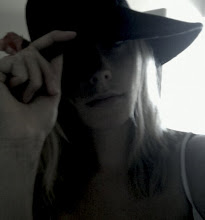Resist Dye: Shibori, Tie Dye, Ombre
Resists prevent dye or paint from penetrating fabric. This protects the current color of the fabric. For example if you start with white fabric the area that is protected will remain white. There are a variety of resists available depending on the effect you are trying to achieve.
Mechanical Resists: may include a variety of waxes, starch, glue, or gutta to form a barrier that prevents dye penetration. Some of the ways these resists can be applied are by brush, stamp, screen or stencil. After applying the resist and dye in alternating steps the fabric is set and the final step is to remove the resist from the fabric.
Physical Resists: use binding, clamping, wrapping, stitching, knotting or folding to prevent penetration of dye, paint or chemicals into the fabric. This technique includes tie-dye, shibori (Japan), plangi (Indonesia), bandhani (India). The result of these techniques gives a distinctive blurred edge between the dyed and resists areas. After applying the resist the fabric should be soaked in plain water to swell the fibers before dying to help in the resist process.
Now we will be working with physical resists, later when we are painting on silk we will be using mechanical resists.
Suggestions:
1. Bound Resists: fabric is knotted on itself or pulled up and tied with string,
rubber bands, elastic or cord. Small beads, buttons or other objects
can be tied up to create a pattern.
2. Clamping: fabric is folded in two or more directions before clamping between
wooden blocks. The size and shape of the block and method of folding
determine the pattern created. These patterns are easily reproducible.
3. Pole Wrapping: in this technique fabric is wrapped around a pole or pipe,
wound with string, then pushed down to compress and resist. The fabric
can be wrapped straight, at an angle, in layers or as a sewn tube
depending on the desired effect. Dyes can then be dripped, painted or
poles can be immersed in dye pots to color the fabric.
4. Shibori/Stitching: hand or machine stitches are gathered very tightly to form
the resist. Stitches can be made in flat or folded fabric. The thread should
be strong enough to be pulled tight. A heavier thread like buttonhole twist,
carpet thread, crochet cotton or waxed thread are better than regular
sewing thread.
All of these techniques may also work in the reverse if starting with a colored fabric and then using a discharge to remove color in the areas not reserved by the resist technique.
A few stitching techniques:




Test #4 Resist Dye
Materials: Tied, Clamped or Sewn Fabric Samples Labeled to identify
Water
Dye Stock
Technique: Soak samples in plain water before adding to dye bath (10 min. or so) to aid resist
Add fabric and stir occasionally for 10-30 minutes(longer time=darker color).
After 30 minutes remove fabric, rinse until water is clear and dry. You may remove the resist materials before drying.
You may also want to try using two or more colors by retying or reclamping and putting your sample into a second color. These techniques are very effective when using color remover between colors.
Record your results and mount your fabric samples in your technique book.
Test #4 Ombre
This is a French term meaning “shaded” or gradated in tone. This may be accomplished by going from light to dark or tone to tone.
To go from light to dark: prepare your dyebath, add fabric and quickly remove the first few inches (this all depends on how and where in a garment of fabric you want the gradation to begin) and continue to slowly pull the fabric from the dye. If the color is not attaining the depth of shade that you require it may be necessary to add more of the dye. The other option is to slowly lower the fabric into the dyebath, but it is harder to see the results.
To go from color to color: there are many ways, but basically prepare two dyebaths, add each end of the fabric to one dyebath and in the middle shift the fabric back and forth between the dyebaths to create a blended color.
This technique will work with many types of dye and appropriate fabrics. If you are planning a garment and want the placement of the ombre in a specific location it may be necessary to cut the garment and partially sew before dying (for instance: you want the dye line on the sleeve to match placement on the garment and front and back to match precisely). To get a softer blend on large pieces of fabric it would be beneficial to wet out the fabric before dying to slow the absorption of dye.
Labels: DIY, Dye, fashion design, surface design, textiles


0 Comments:
Post a Comment
Subscribe to Post Comments [Atom]
<< Home